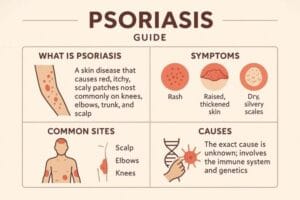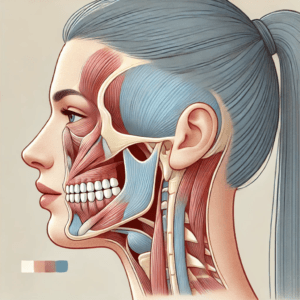Taming the Worry Monster: Your Guide to Anxiety Meds, Past, Present, and Future
Table of Contents

Taming the Worry Monster: Your Guide to Anxiety Meds, Past, Present, and Future
Living with persistent worry and fear can feel like constantly battling a relentless “worry monster.” For millions of Americans, anxiety meds offer a crucial path to managing these overwhelming feelings, allowing them to reclaim their lives. You might be struggling with a racing heart, restless nights, or an inability to focus, all hallmarks of anxiety disorders that can significantly impact daily life. These conditions aren’t just about feeling stressed; they involve complex changes in your brain chemistry that can make normal coping mechanisms insufficient. We understand the frustration and exhaustion that comes with trying to navigate life when anxiety takes over. This guide aims to clarify how these medications work, their journey through history, what current experts recommend, the ongoing debates surrounding them, and what the future holds for anxiety treatment.
So, What’s the Buzz About Anxiety Meds?
When anxiety disorders take hold, they can feel like an internal alarm system stuck in the “on” position. Think of it this way: your brain has a control center for emotions, often called the limbic system, which includes areas like the amygdala, responsible for fear responses. In someone with anxiety, this system can become overactive, constantly perceiving threats even when none exist. This overactivity often relates to imbalances in specific brain chemicals, known as neurotransmitters, such as serotonin, norepinephrine, and GABA.
The Brain’s Balancing Act
Anxiety medications, often referred to as anxiolytics, are designed to restore balance to these vital brain chemicals. They work by tweaking the communication pathways between brain cells, aiming to calm that overactive “panic button.” For example, some medications increase the availability of calming neurotransmitters, while others block signals that trigger stress responses. Our goal with these treatments is not to eliminate all feelings, but to reduce the intensity and frequency of anxiety symptoms, helping you regain a sense of peace and control.
The Main Players: Understanding Your Options
Today, we have several types of anxiety-fighting drugs available, each with a unique way of working. Let’s look at the major categories:
- SSRIs & SNRIs (Selective Serotonin Reuptake Inhibitors & Serotonin-Norepinephrine Reuptake Inhibitors): These are often the first choice for treating anxiety disorders. They work by boosting serotonin, a neurotransmitter linked to mood and well-being, and sometimes norepinephrine, which influences alertness and energy. Think of them as mood-stabilizers that gently rebalance your brain chemistry over several weeks. Common examples include sertraline (Zoloft) and escitalopram (Lexapro).
- Benzodiazepines (Benzos): These medications act as a rapid-response team for acute panic or severe anxiety, quickly hitting the brain’s GABA system to produce a calming effect. They’re excellent for immediate relief but come with a warning label: they’re typically for short-term use due to the risk of dependence. Alprazolam (Xanax) and diazepam (Valium) are well-known examples.
- Others on the Roster: Beyond these, we have other options. Buspirone is a non-drowsy medication that slowly boosts serotonin, often used for chronic anxiety. Beta-blockers, like propranolol, can manage physical symptoms such as a racing heart or trembling, often prescribed for performance anxiety. Older antidepressants, such as TCAs (Tricyclic Antidepressants) and MAOIs (Monoamine Oxidase Inhibitors), are sometimes used when other treatments haven’t worked, though they have more side effects. It’s a diverse toolkit, offering personalized treatment plans.
Anxiety Relief Through the Ages: A Historical Snapshot
Humanity has grappled with anxiety for millennia, long before modern medicine offered its solutions. Our ancestors sought solace in various ways, reflecting an enduring quest for calm.
Ancient Chill Pills
Way back, people used rituals, prayers, and herbal concoctions to soothe their worries. The ancient Greeks, for instance, linked mental health to bodily humors, suggesting treatments like specific diets or exercises. Philosophers like the Stoics advocated for managing inner thoughts and focusing on the present, a surprisingly modern cognitive approach. Early remedies included meditation and breathwork, alongside natural substances such as valerian root and chamomile tea. These methods laid the groundwork for understanding the mind-body connection in alleviating distress.
The Early (and Risky) Days
As we moved into the 19th century, the approach to anxiety became more pharmacological, though often with significant risks. Substances like opium, alcohol, and bromide salts were commonly used. While they offered quick fixes, their addictive properties and severe side effects often caused more trouble than they solved, highlighting the dangers of unrefined treatments. My great-grandmother used to say, “They’d give you a sip of whiskey for a fright, but then you’d have a fright for the whiskey!” – a testament to the double-edged sword of these early sedatives.
The Barbiturate Boom (and Bust)
The early 1900s brought the first major synthetic anxiety medications: barbiturates. Drugs like barbital (Veronal), introduced in 1903, became popular for treating agitation, anxiety, and insomnia. They worked by increasing GABA, a calming neurotransmitter in the brain. For a time, they seemed like a breakthrough. However, their widespread use quickly revealed significant drawbacks: a high risk of overdose, severe physical dependence, and dangerous withdrawal symptoms. This “boom” eventually led to a “bust” as their dangers became undeniable by the 1950s.
Enter the Benzodiazepines
The mid-20th century marked a pivotal moment with the accidental discovery of chlordiazepoxide (Librium) in 1955, followed by diazepam (Valium) in 1963. These benzodiazepines were initially hailed as a miracle. They seemed safer than barbiturates, with less risk of lethal overdose. By the 1970s, they became some of the most prescribed medications globally, offering rapid relief from anxiety, panic attacks, and insomnia. But the honeymoon didn’t last forever. By the 1980s, concerns about dependence, abuse, and challenging withdrawal symptoms started to surface, casting a shadow over their long-term use.
The SSRI/SNRI Revolution
The late 1980s and early 1990s ushered in another revolution with the introduction of Selective Serotonin Reuptake Inhibitors (SSRIs) like fluoxetine (Prozac) in 1987. These new medications offered a different pathway, selectively targeting serotonin without the immediate sedative or high addiction potential of benzodiazepines. Soon after, Serotonin-Norepinephrine Reuptake Inhibitors (SNRIs) joined the ranks, influencing both serotonin and norepinephrine. These classes quickly became the modern favorites, offering a safer and more tolerable option for long-term anxiety management, though they often require several weeks to show their full effects.
Today’s Treatment Talk: What the Experts Are Saying
Today, the medical community’s approach to anxiety treatment is far more nuanced and personalized than in the past. We’ve learned that a combination of strategies often yields the best results.
The Go-To Strategy
Leading professional organizations, such as the American Psychiatric Association (APA) and the Anxiety and Depression Association of America (ADAA), typically recommend a tag-team approach: combining therapy, especially Cognitive Behavioral Therapy (CBT), with medication. Why both? Therapy helps you develop coping skills and understand thought patterns, while medication can ease the overwhelming symptoms, making it easier to engage in therapy and apply new strategies. It’s about empowering you from multiple angles. We hear from patients like Sarah, who shared, “Therapy helped me understand why I felt anxious, but my medication made it possible to actually do the work in therapy. I couldn’t have managed it otherwise.”
First String Players: SSRIs and SNRIs
For most anxiety disorders, SSRIs and SNRIs are usually the first ones up to bat. Doctors prefer them because they have a favorable side effect profile compared to older drugs and a lower risk of dependence. We often advise sticking with these medications for at least 6 to 12 months, or even longer, after symptoms improve. This duration helps prevent relapse and allows the brain to fully rebalance. These medications don’t offer instant relief; they typically take 2 to 4 weeks, sometimes up to 6, to show their full anxiolytic effect. During this initial period, some individuals might even experience a temporary increase in anxiety, which is why close communication with your doctor is essential.
When Benzos Step In: Short-Term Support
While SSRIs and SNRIs are the long-game players, the speedy relief of benzodiazepines is still valuable for specific situations. They are excellent for short-term crises, such as a severe panic attack, or as a temporary bridge while waiting for an SSRI or SNRI to kick in. Their rapid action can be a lifesaver when anxiety is acute and debilitating. However, we generally avoid long-term use due to the significant risks of dependence and withdrawal, a consensus strongly supported by guidelines from organizations like the National Institute of Mental Health (NIMH). Your doctor will carefully weigh these factors when considering a benzodiazepine prescription.
Other Tools in the Kit
Beyond the main players, other medications offer tailored support:
- Buspirone (BuSpar): A gentle, non-sedating option for chronic anxiety that takes a few weeks to become fully effective. It’s non-habit forming and can be a good choice for those concerned about dependence.
- Beta-blockers (e.g., Propranolol): These are not primarily for psychological anxiety but excel at taming physical symptoms like a racing heart or trembling. They’re great for situational anxiety, like before a big presentation or social event.
- Anticonvulsants (e.g., Pregabalin): Sometimes used as an add-on, especially for treatment-resistant anxiety or specific disorders like social anxiety.
- Antihistamines (e.g., Hydroxyzine): Can provide sedative effects for short-term anxiety, offering a dependence-safer alternative to benzodiazepines.
Who Makes the Rules? Guiding Principles for Care
The treatment landscape for anxiety is guided by rigorous research and the expertise of major professional organizations. The APA publishes comprehensive practice guidelines, while the ADAA actively promotes education and research on effective treatments. The NIMH also plays a crucial role in providing expert-reviewed information. These bodies ensure that doctors follow evidence-based practices, constantly evaluating the efficacy and safety of available options. They empower us to offer you the most effective and responsible care possible.
Are you ready to explore your anxiety treatment options? Connect with a mental health professional today to discuss a personalized plan.
The Great Medication Debate: Are We Really Better Off?
While anxiety medications have undeniably transformed treatment for many, their widespread use hasn’t been without its share of debate and controversy. We often hear questions about their true effectiveness and long-term implications.
The “Does It Even Work?” Question
It’s a valid question: how truly effective are these medications, and for whom? Research generally supports the short-term efficacy of SSRIs and SNRIs in reducing anxiety symptoms compared to placebo. For instance, a Cochrane review indicated antidepressants are effective in the short term for generalized anxiety disorder, with a 41% higher response rate. However, some discussions highlight that the benefit might be small for some individuals, and the powerful placebo effect can also play a role. As a healthcare provider, I find that success often hinges on careful diagnosis and matching the right medication to the right person. “For me,” said Michael, “it wasn’t a magic bullet, but it lowered the volume on my anxiety enough so I could actually think and work through things in therapy.”
Benzos: The Double-Edged Sword
Benzodiazepines remain a cornerstone for acute anxiety, yet their inherent risks fuel ongoing debates.
- The Addiction Trap: The most significant concern is the high risk of physical dependence and addiction, even at prescribed doses. Abruptly stopping benzodiazepines can lead to severe and dangerous withdrawal symptoms, including seizures, psychosis, and extreme anxiety. We see patients who struggle immensely to taper off, underscoring the challenge.
- Long-Term Blues: Prolonged use has been linked to impaired cognitive functioning, memory problems, and an increased risk of falls, particularly in older adults. While they don’t cause Alzheimer’s, the cognitive impact is a serious consideration.
- Overprescription Predicament: There’s an ongoing debate about whether doctors have historically prescribed them too readily or for too long, especially given their short-term indication. Balancing immediate relief with long-term safety is a constant challenge for prescribers.
SSRIs/SNRIs: Not So Innocent Either
While generally safer for long-term use than benzodiazepines, SSRIs and SNRIs have their own set of controversies.
- The “Black Box” Warning: The FDA issued a “black box” warning about an increased risk of suicidal thoughts and behaviors in children, teenagers, and young adults under 25, especially when starting these medications or changing doses. This highlights the complex interaction with developing brains, requiring careful monitoring.
- Unwanted Guests: Common side effects can include nausea, headaches, and a significant concern for many: sexual dysfunction (decreased libido, difficulty with orgasm). Some patients also report weight changes. While many side effects subside, sexual dysfunction can persist and greatly impact quality of life.
- The Withdrawal Woes: Though not considered “addictive” in the same way as benzodiazepines, suddenly stopping SSRIs can lead to Antidepressant Discontinuation Syndrome, with symptoms like anxiety, dizziness, flu-like feelings, and “brain zaps.” This is more than “getting off a drug”; it’s a physiological response that necessitates a slow, medically supervised taper.
- Emotional Flatlines: Some patients report feeling emotionally “numb” or “blunted” on these medications, a sense of losing both the lows and the highs. This “emotional anesthesia” can be distressing and requires careful discussion with a doctor to adjust dosage or explore alternatives.
Ethical Quandaries in Prescription
The ethical landscape of prescribing anxiety medications is complex, touching on fundamental principles of patient care.
- Signing on the Dotted Line: Informed Consent: Truly informed consent is vital. It means discussing all potential benefits, risks, and alternative treatments, including therapy, transparently. Do patients fully understand the potential for side effects, withdrawal, or the need for long-term commitment?
- Is It a Disorder or Just Life?: Where do we draw the line between normal human stress and a diagnosable condition requiring medication? This is a tricky ethical boundary, particularly in a society that often seeks quick fixes for discomfort.
- “Cosmetic” Pill-Popping: The idea of using medication to “enhance” normal feelings or address everyday stressors rather than treating a diagnosable illness raises eyebrows. Should we medicalize normal human experiences?
- The Doctor’s Dilemma: Healthcare providers sometimes feel pressure to prescribe, or worry about leaving a patient without support, even when alternative therapies might be more appropriate. Navigating these pressures while upholding ethical standards is a constant challenge.
The Future of Feeling Calm: What’s on the Horizon?
The field of anxiety treatment is constantly evolving, with exciting research aimed at developing more effective, faster-acting, and personalized solutions. The goal is to move beyond current limitations, providing more targeted relief with fewer side effects.
Beyond Serotonin: New Drug Targets
Scientists are exploring new pathways in the brain beyond the traditional serotonin and GABA systems. We’re seeing intense research into:
- Glutamate System Modulators: Drugs like ketamine, previously an anesthetic, are being studied for their rapid antidepressant and anxiolytic effects by influencing neuroplasticity. Esketamine, a nasal spray, is already approved for treatment-resistant depression and hints at a future of faster-acting anxiety solutions.
- Neuropeptides and Endocannabinoid System: These systems show significant promise for novel drug development, potentially offering fresh ways to calm an anxious brain.
- Alpha-7 Nicotinic Acetylcholine Receptor (α7-nAChR) Agonists: Experimental drugs like BNC210 (Soclenicant) target this different pathway, aiming to reduce anxiety with a lower risk of sedation or dependence than existing options.
These innovations mean we’re likely to see a wider range of tailored medications in the coming years.
Speedy Solutions: Relief in Hours, Not Weeks
One major limitation of current first-line anxiety medications is their delayed onset of action. Imagine anxiety meds that work in hours, not weeks! Research is focused on just that. Inhaled neurosteroids, like PH94B, are being developed for rapid relief in acute anxiety situations. This could revolutionize how we manage sudden panic attacks or severe, immediate distress, offering hope to those who currently wait weeks for symptom improvement.
The Psychedelic Renaissance: Breakthrough Relief?
Perhaps one of the most intriguing frontiers is the exploration of psychedelic-assisted therapies. Compounds like MDMA (currently studied for PTSD, with potential for social anxiety) and psilocybin (from “magic mushrooms”) and LSD (MM-120 has received Breakthrough Therapy designation from the FDA for generalized anxiety disorder) are being investigated under careful supervision. These therapies aim to facilitate profound psychological shifts, potentially offering breakthrough relief for tough cases that haven’t responded to traditional care. This isn’t about recreational use; it’s a structured, therapeutic approach with professional guidance, showing significant promise in early trials for strong and lasting reductions in psychiatric symptoms.
Tailoring Your Treatment: Personalized Medicine
The future of anxiety treatment looks increasingly personalized. Imagine using your unique genetic profile to find the perfect anxiety medication for you, avoiding the current trial-and-error approach. This field, called pharmacogenomics, studies how your genes influence your response to drugs, aiming to identify which medications will be most effective and cause the fewest side effects. This personalized medicine approach seeks to provide a more precise and efficient path to feeling better.
Tech to the Rescue: Digital Support
Technology is rapidly changing how we approach mental health support:
- Virtual Reality Exposure Therapy (VRET): This technology offers a controlled, digital environment to gradually confront fears, proving effective for phobias and social anxiety by safely retraining the brain’s threat responses.
- AI-Powered Chatbots: We’re seeing the rise of AI chatbots offering instant support, therapeutic exercises, and even guided meditations, providing accessible resources for many. While not a replacement for human therapists, they can offer valuable immediate support.
- Wearable Devices: Imagine devices that monitor your physiological signs of anxiety and offer real-time coping strategies. This integration of technology into daily life can empower individuals to manage their anxiety more proactively.
Brain Tweaks & Mindful Moves
Beyond medication and talk therapy, other innovative approaches are gaining traction:
- Neuromodulation: Techniques like Transcranial Magnetic Stimulation (TMS), already approved for depression and OCD, are being explored for anxiety disorders, aiming to reduce overactivity in anxiety-related brain regions.
- Acceptance and Commitment Therapy (ACT): This therapy focuses on psychological flexibility, helping individuals accept difficult thoughts and feelings while committing to actions aligned with their values.
- Mindfulness-Based Cognitive Therapy (MBCT): Integrating mindfulness practices, MBCT teaches you to connect with the present moment, helping to manage anxious thoughts and feelings more openly and reduce long-term symptoms.
Green Therapy: Nature’s Calming Touch
And sometimes, the future points back to simpler solutions. Research even supports the benefits of horticultural therapy, where organized gardening led by trained therapists is proving its worth. Studies show it can reduce stress hormone levels and significantly alleviate symptoms of anxiety, depression, and PTSD. It reminds us that a holistic approach, encompassing medication, therapy, and even nature, often offers the most profound and sustainable path to calm.
Conclusion: Navigating the Path to Peace
Managing anxiety is a deeply personal journey, and for many, anxiety meds are a vital tool in that process. We’ve explored how these medications work by rebalancing brain chemistry, from the rapid relief of benzodiazepines to the longer-term stability offered by SSRIs and SNRIs. We’ve also journeyed through their fascinating history, understanding how treatments have evolved from ancient remedies to today’s sophisticated pharmaceuticals. We recognize the importance of aligning with current medical consensus, often favoring a combined approach with psychotherapy, while also acknowledging the ongoing debates about efficacy, side effects, and ethical considerations. The future promises even more targeted, rapid, and personalized treatments, including breakthroughs in psychedelic-assisted therapies and digital health tools. Remember, taking control of your mental health is a sign of strength. If you are struggling with anxiety, reach out to a healthcare professional to discuss whether anxiety meds could be a part of your journey toward a calmer life.
Frequently Asked Questions About Anxiety Medications
Q1: How do anxiety medications work in the brain?
A: Anxiety meds primarily work by adjusting the levels of neurotransmitters, which are chemical messengers in your brain. For example, many increase serotonin or norepinephrine to improve mood and reduce worry, while others enhance the calming effects of GABA.
Q2: Are SSRIs and SNRIs addictive?
A: No, SSRIs and SNRIs are not considered addictive in the same way benzodiazepines are. However, stopping them abruptly can lead to “antidepressant discontinuation syndrome,” which has uncomfortable withdrawal-like symptoms. It’s crucial to taper off these anxiety meds under a doctor’s supervision.
Q3: What are the main differences between benzodiazepines and SSRIs for anxiety treatment?
A: Benzodiazepines offer rapid, short-term relief for acute anxiety or panic attacks by quickly enhancing GABA. SSRIs take several weeks to work and are used for long-term management of chronic anxiety disorders by balancing serotonin, with a lower risk of dependence.
Q4: Can anxiety medications change my personality?
A: A common concern, but anxiety meds are designed to reduce overwhelming symptoms, not change your personality. Many people report feeling more like their authentic selves as the medication helps alleviate their anxiety, allowing them to engage more fully with life.
Q5: What are some common side effects of anxiety medications?
A: Side effects vary by medication type. SSRIs/SNRIs can cause nausea, sexual dysfunction, and weight changes. Benzodiazepines can lead to drowsiness, dizziness, and a risk of dependence. Discuss any concerns with your doctor, as side effects often improve over time or can be managed.
Q6: Is medication the only treatment for anxiety?
A: Absolutely not. While effective, medication is often just one part of a comprehensive treatment plan. Psychotherapy, especially Cognitive Behavioral Therapy (CBT), is highly effective, and many find the best results from a combination of therapy and anxiety meds. Lifestyle changes, such as exercise and mindfulness, also play a significant role.
For more information, visit: National Institute of Mental Health (NIMH) – Anxiety Disorders














Post Comment